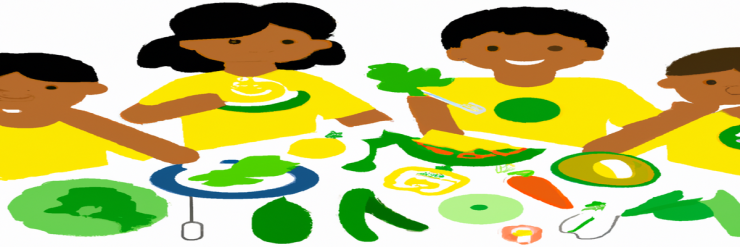The Raw Vegan Diet

How to Eat a Plant-Based Diet Without Cooking?
A raw vegan diet is a plant-based diet that consists of raw, unprocessed, and uncooked foods. This type of diet has become increasingly popular in recent years, as more and more people seek to improve their health and reduce their carbon footprint. In this article, we will explore the benefits of a raw vegan diet and how to get started on this lifestyle.
A. What is a Raw Vegan Diet?
A raw vegan diet is a diet that consists of uncooked, unprocessed, and whole plant-based foods. This includes fruits, vegetables, sprouts, nuts, seeds, and dried fruits. The foods are consumed in their raw state, either fresh or dehydrated, without any cooking or heating above 115°F. The idea behind this diet is to preserve the nutrients and enzymes in the foods, as cooking can destroy these beneficial components.
B. Benefits
1. Increased Nutrient Absorption:
Raw foods contain live enzymes that aid in digestion and the absorption of nutrients. When foods are cooked, these enzymes are destroyed, leading to a decrease in nutrient absorption.
2. Improved Health:
A raw vegan diet is rich in vitamins, minerals, and antioxidants, which can lead to improved overall health and reduced risk of chronic diseases.
3. Weight Loss:
A raw vegan diet is typically lower in calories and higher in fiber, making it an effective way to lose weight.
4. Environmental Sustainability:
A raw vegan diet is a more environmentally friendly option, as it reduces the amount of resources needed for food production and helps to reduce greenhouse gas emissions.
C. How to Get Started on a Raw Vegan Diet?
1. Gradual Transition:
Start by incorporating more raw foods into your diet and gradually reducing your consumption of cooked foods. This will allow your body to adjust to the new diet and prevent any digestive discomfort.
2. Plan Your Meals:
Planning your meals in advance can help you ensure that you are consuming a balanced and nutrient-dense diet.
3. Invest in a Dehydrator:
A dehydrator is a useful tool for a raw vegan diet, as it allows you to dehydrate fruits and vegetables, making them easier to store and eat on-the-go.
4. Experiment with New Foods:
Try new raw foods and recipes to keep your meals interesting and enjoyable.
5. Consult with a Healthcare Professional:
It is important to consult with a healthcare professional before starting any new diet, especially if you have any pre-existing medical conditions.
A raw vegan diet is a healthy and sustainable way to improve your overall health and reduce your carbon footprint. While it may take some time to get used to, with the right preparation and planning, anyone can successfully adopt a raw vegan lifestyle.
Real-Life Examples
1. Breakfast:
A smoothie made from fresh berries, almond milk, and avocado, topped with granola and chia seeds.
2. Lunch:
A large salad made from mixed greens, cherry tomatoes, cucumber, red bell pepper, and sprouts, topped with a lemon vinaigrette and avocado slices.
3. Dinner:
A wrap made from a large collard green leaf filled with sliced veggies, hummus, and sprouts.
4. Snack:
Fresh fruit, such as apples, bananas, or berries, or a handful of raw almonds or cashews.
5. Dessert:
A frozen banana blended with almond milk and cocoa powder to make a creamy, dairy-free "ice cream".
6. Hydration:
Drink plenty of water and herbal teas to stay hydrated throughout the day.
These are just a few examples, but the possibilities are endless with a raw vegan diet. The key is to experiment with different ingredients and find what works best for you and your taste preferences.
